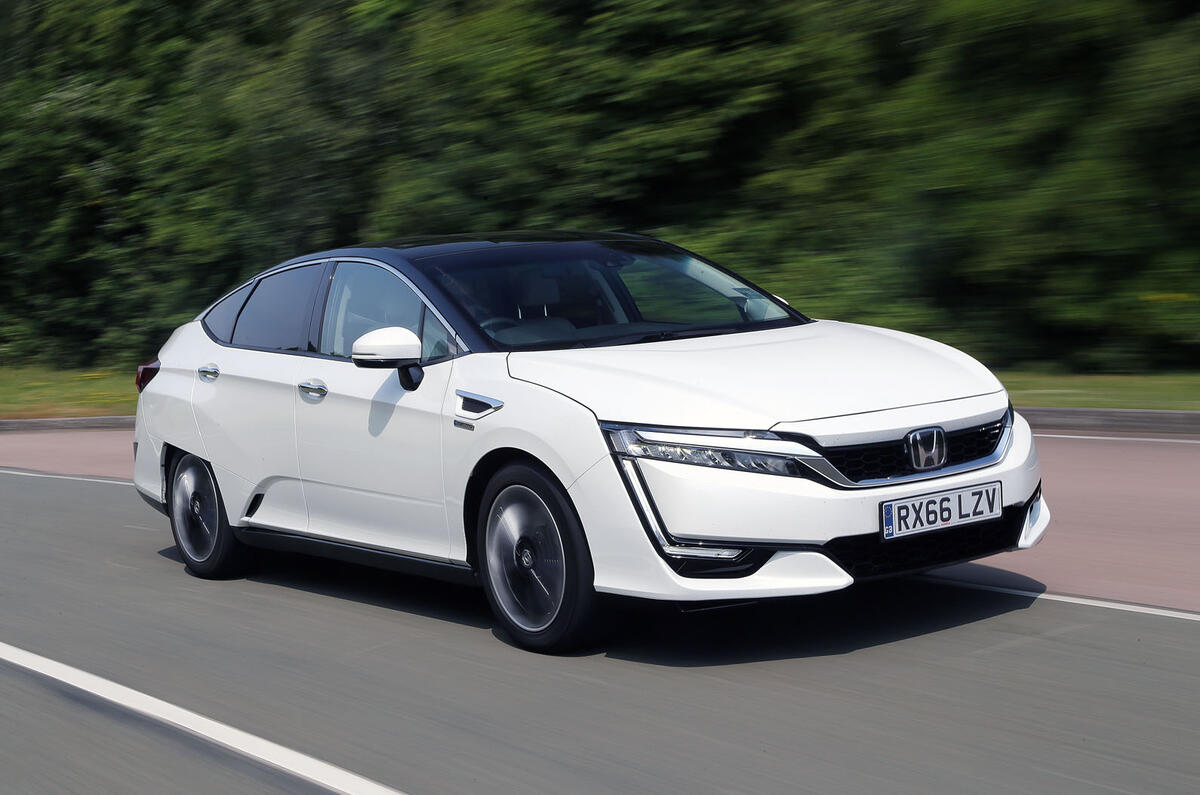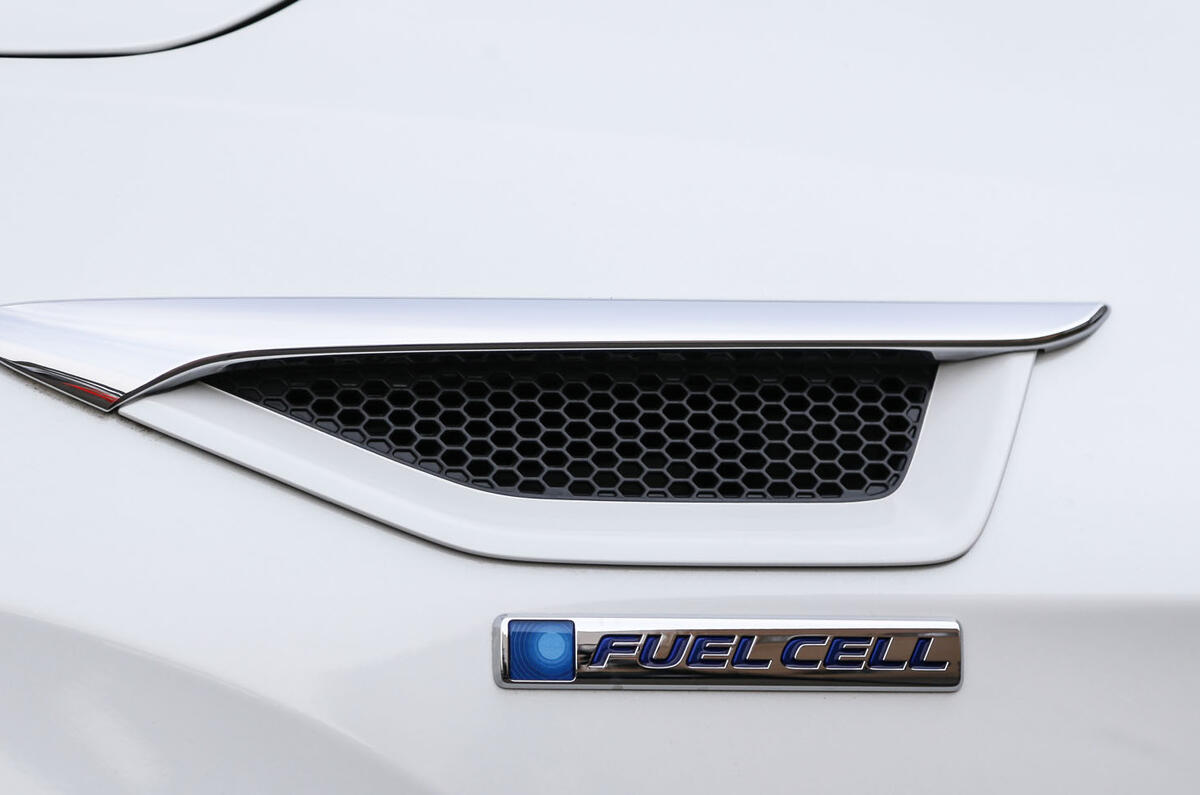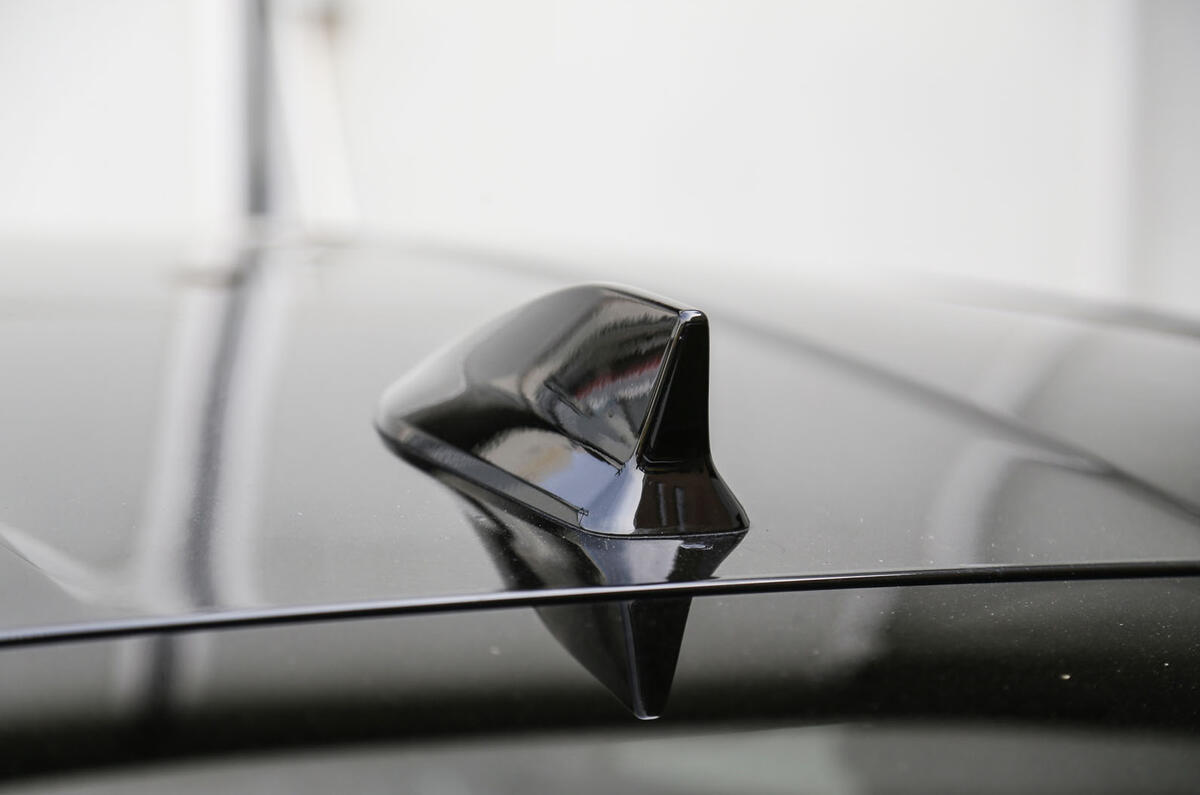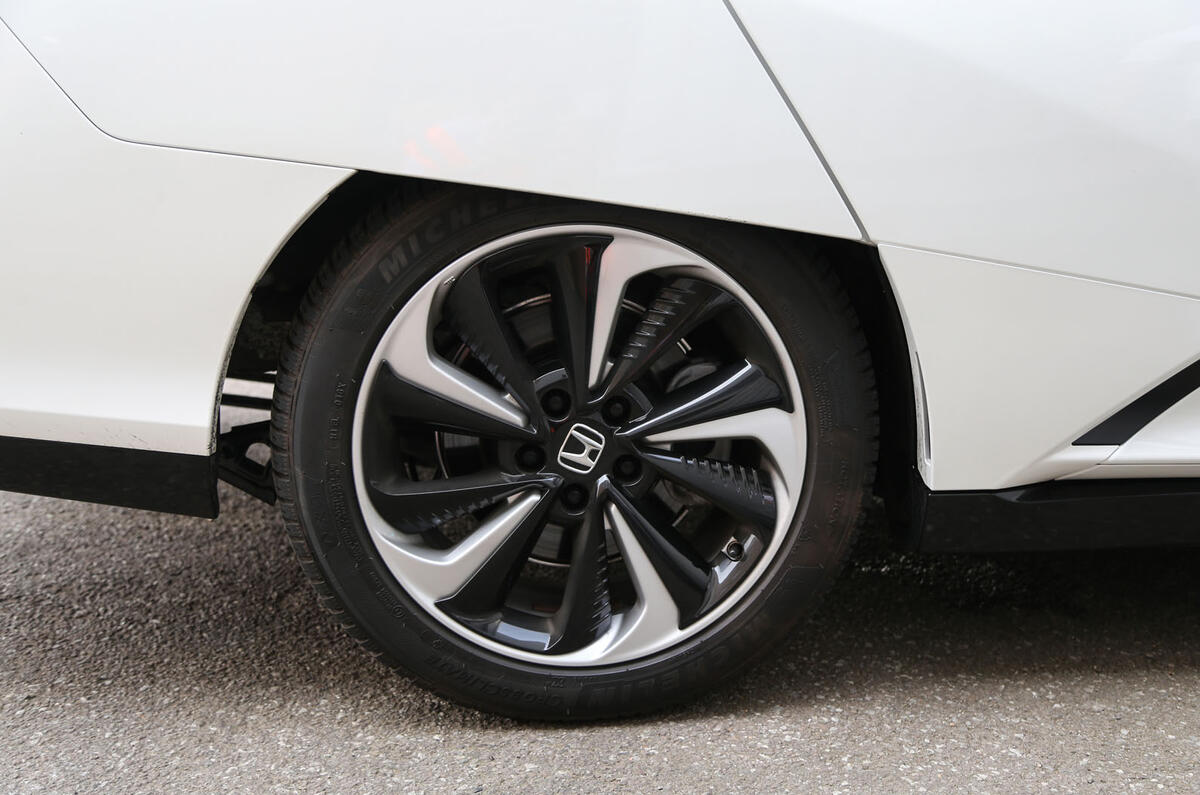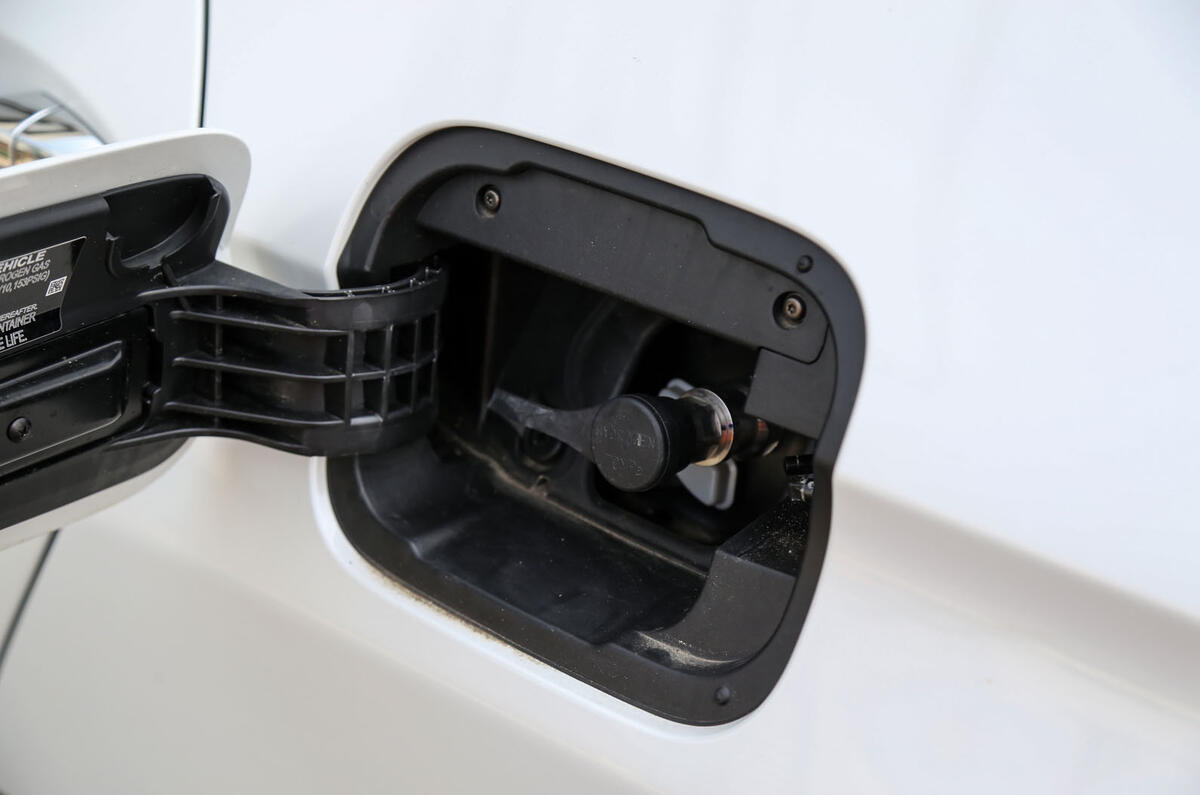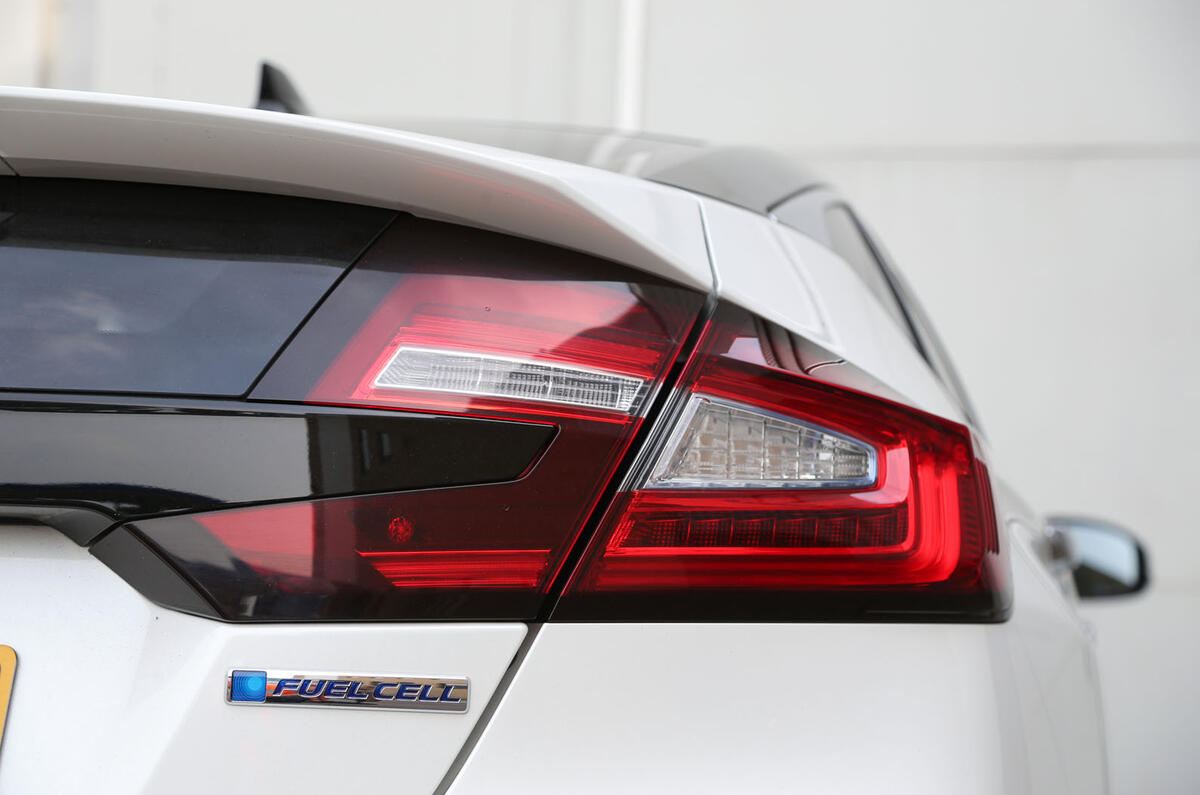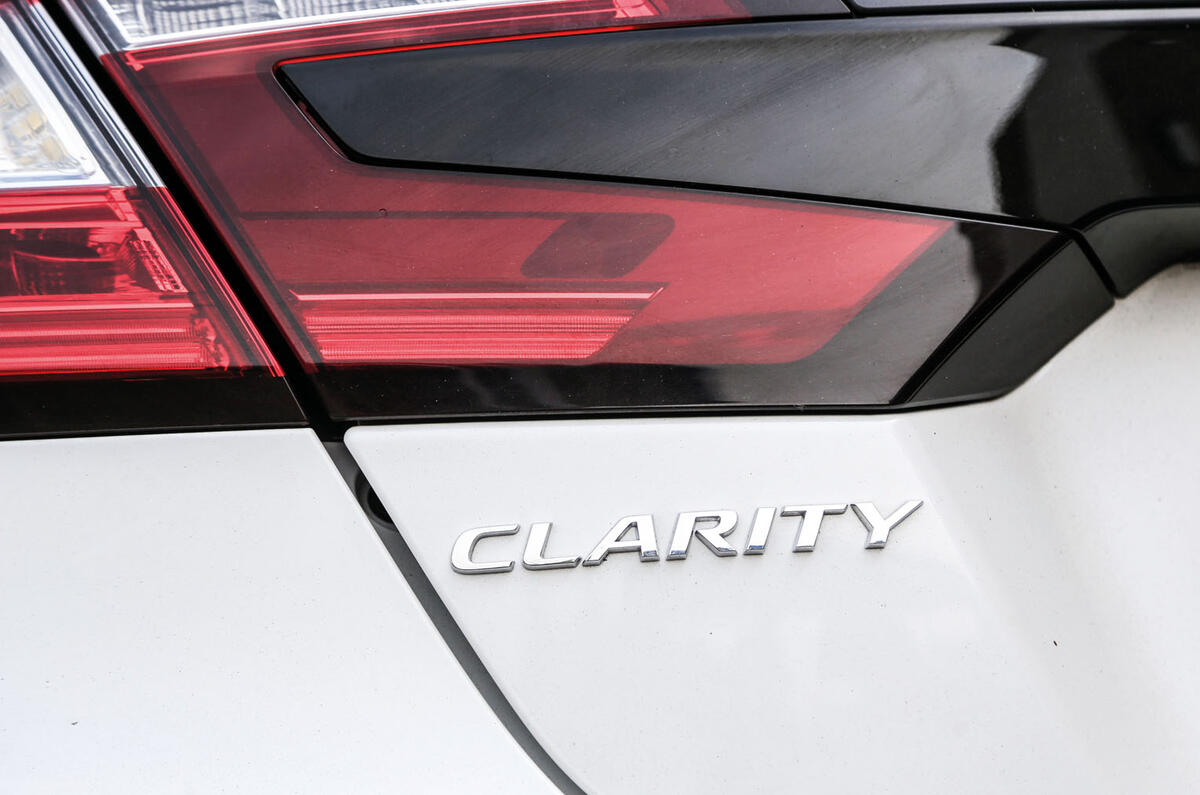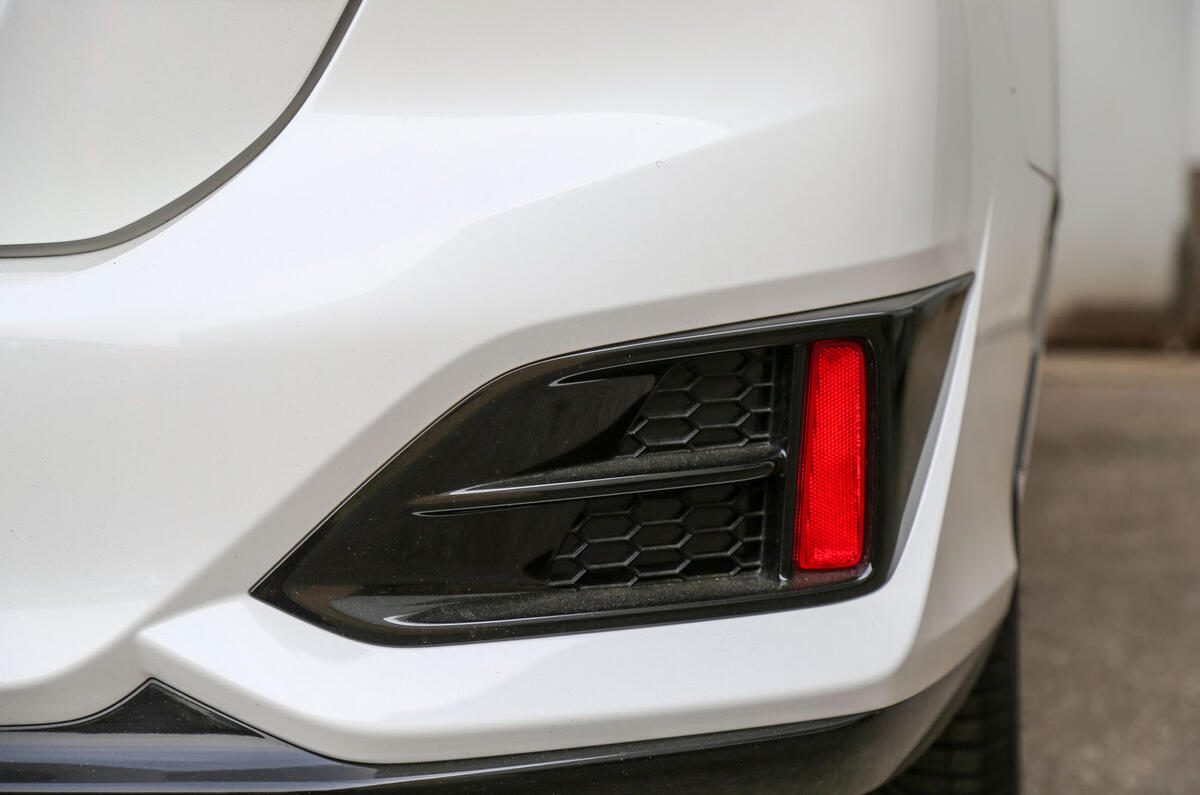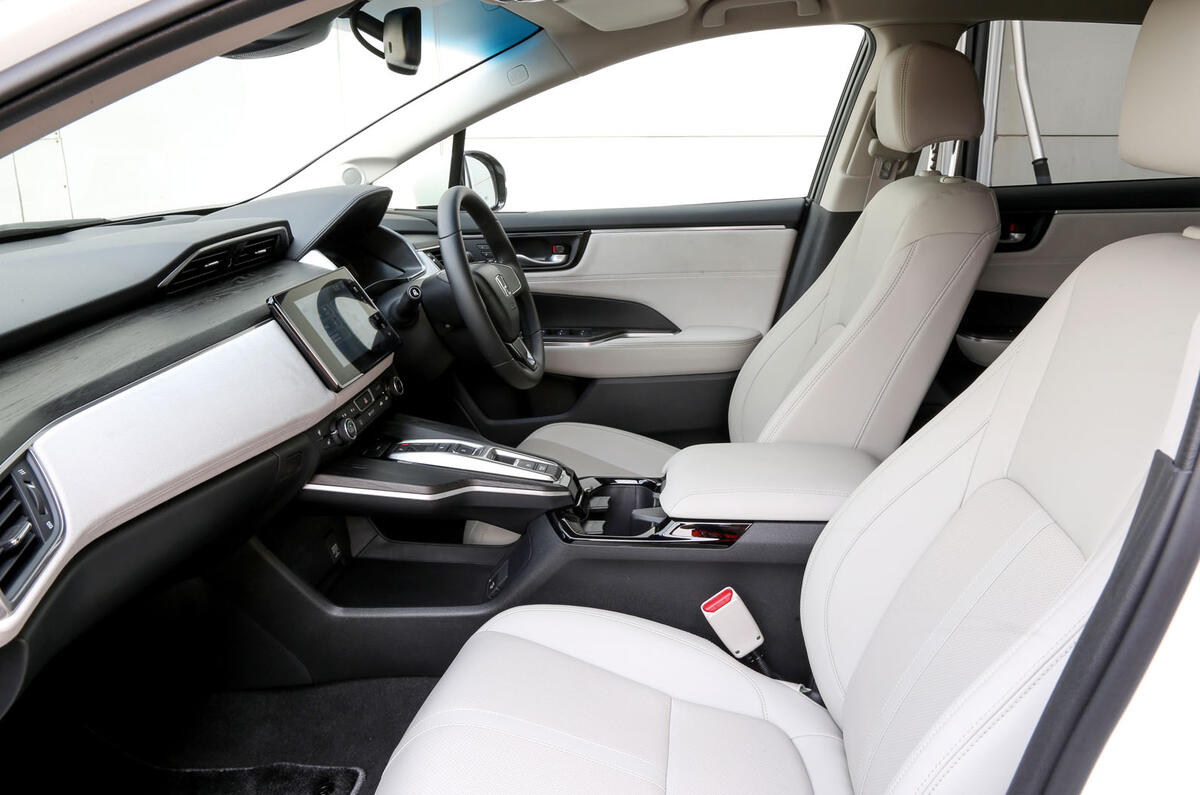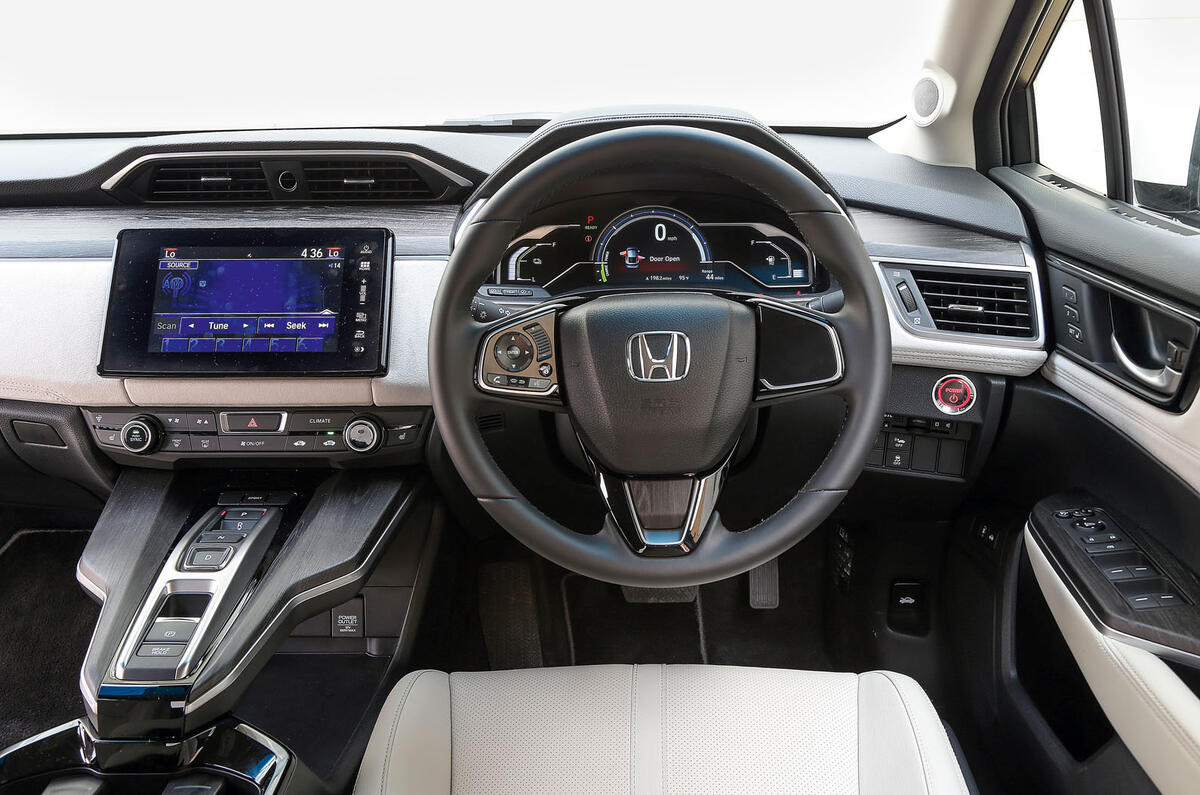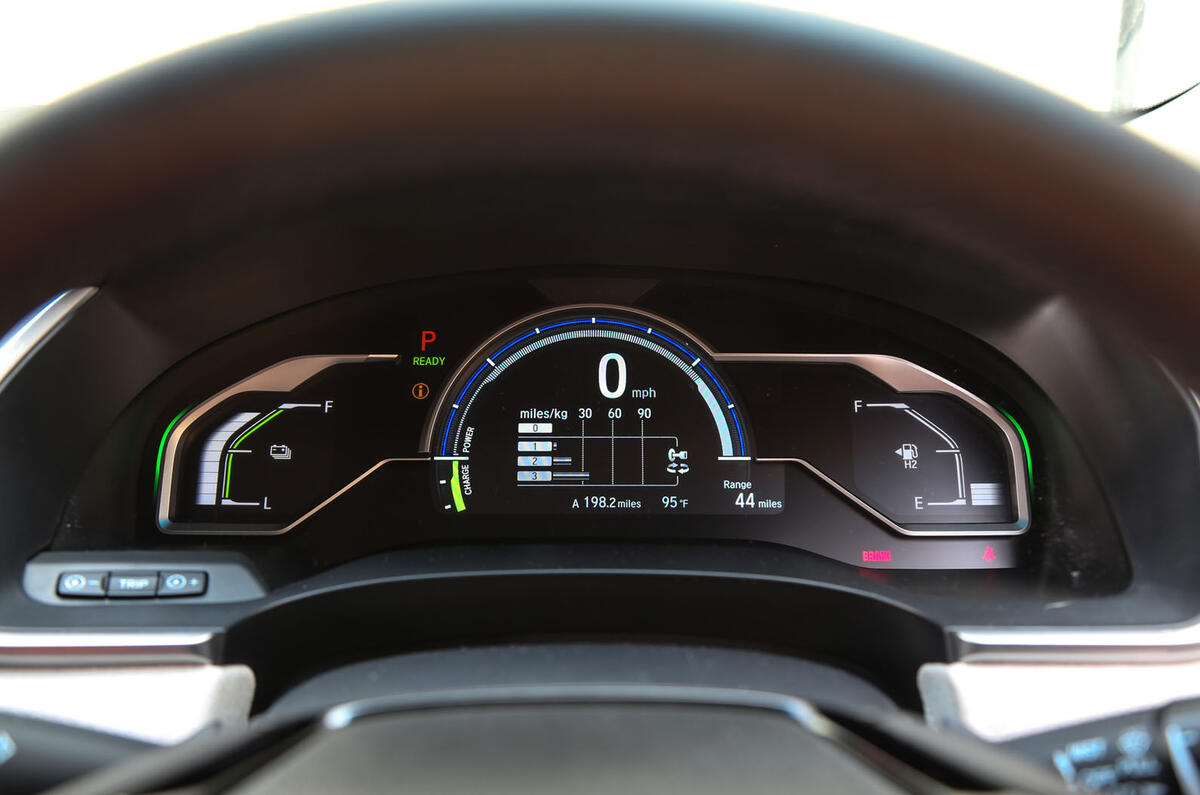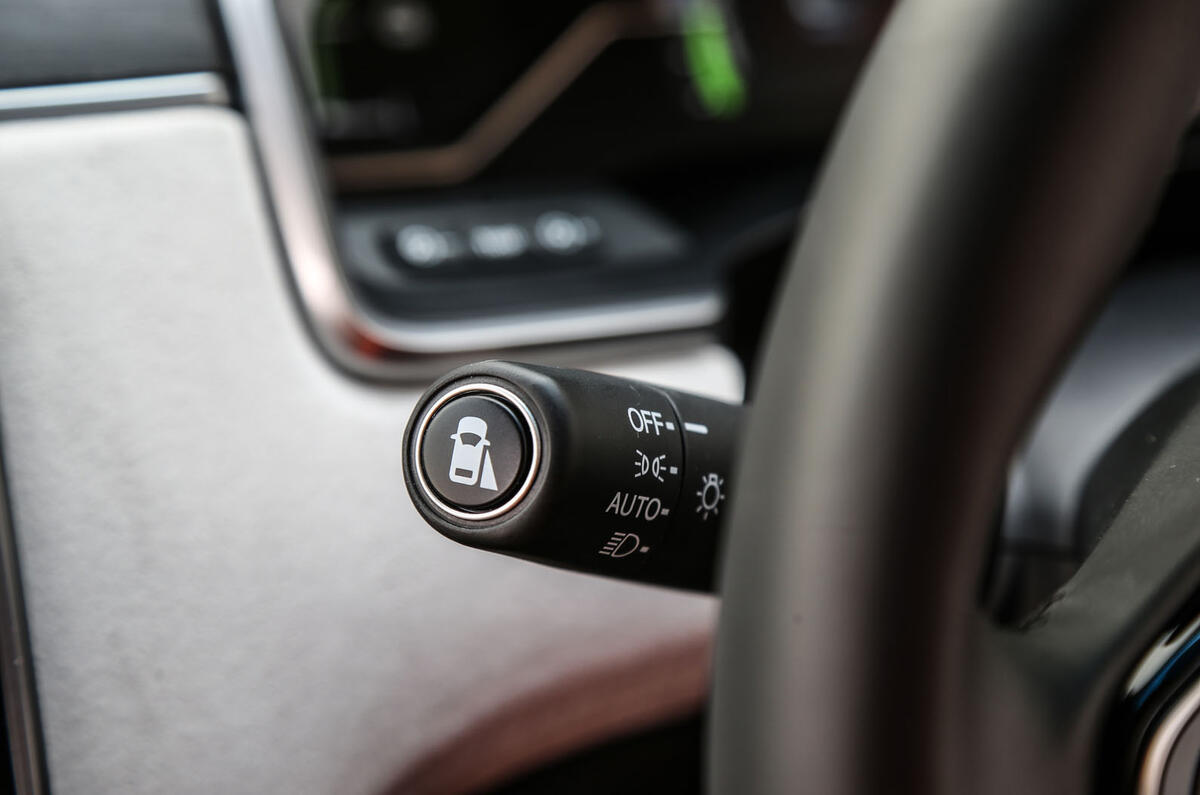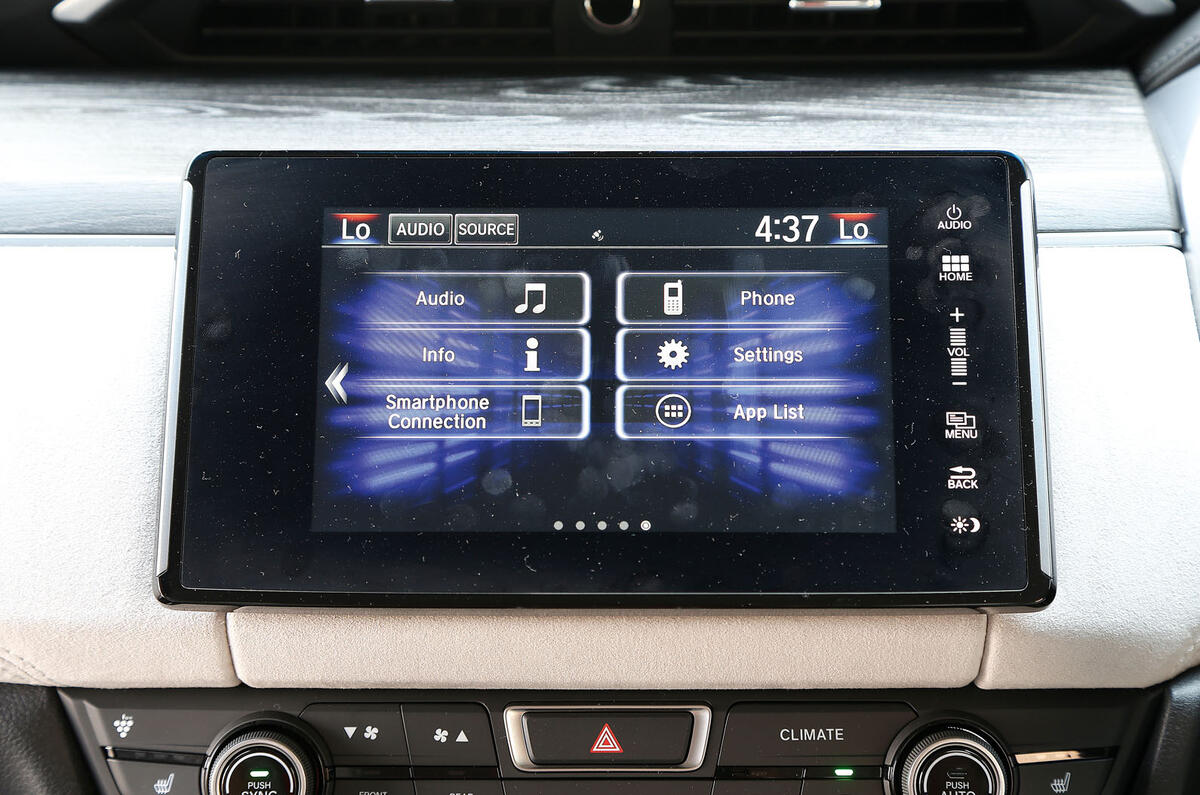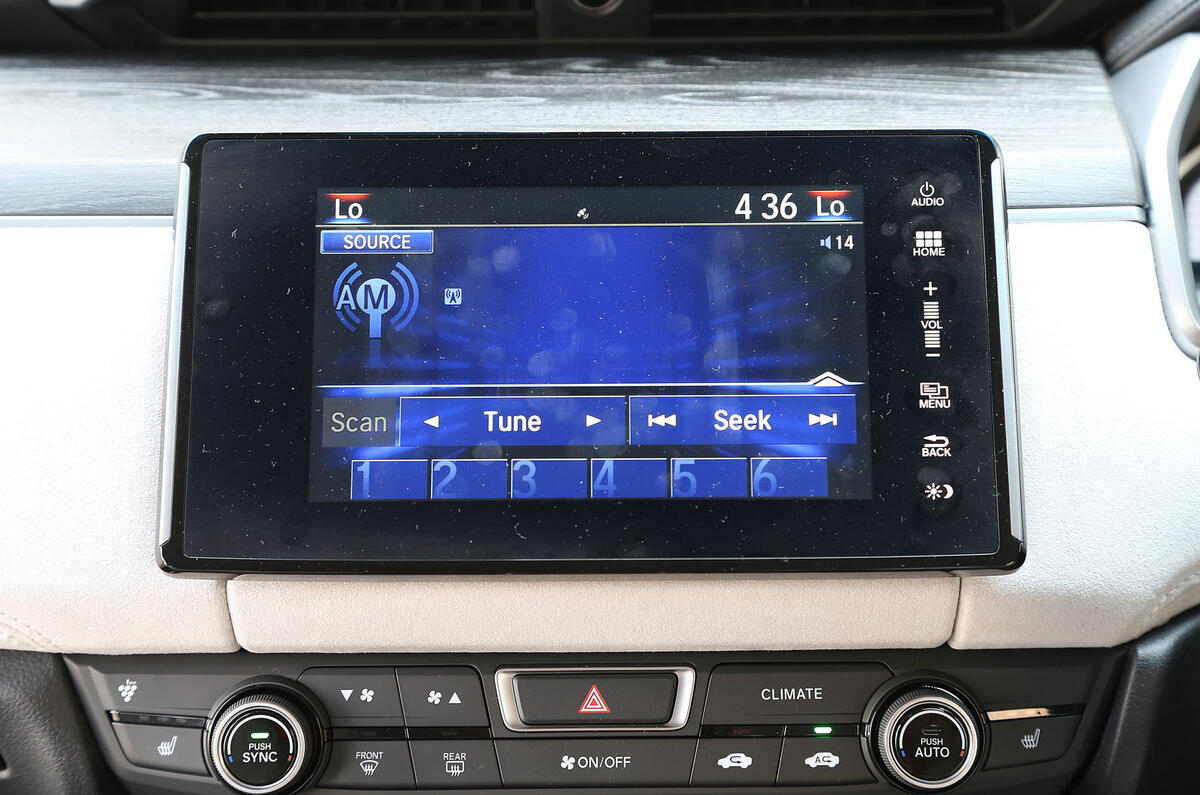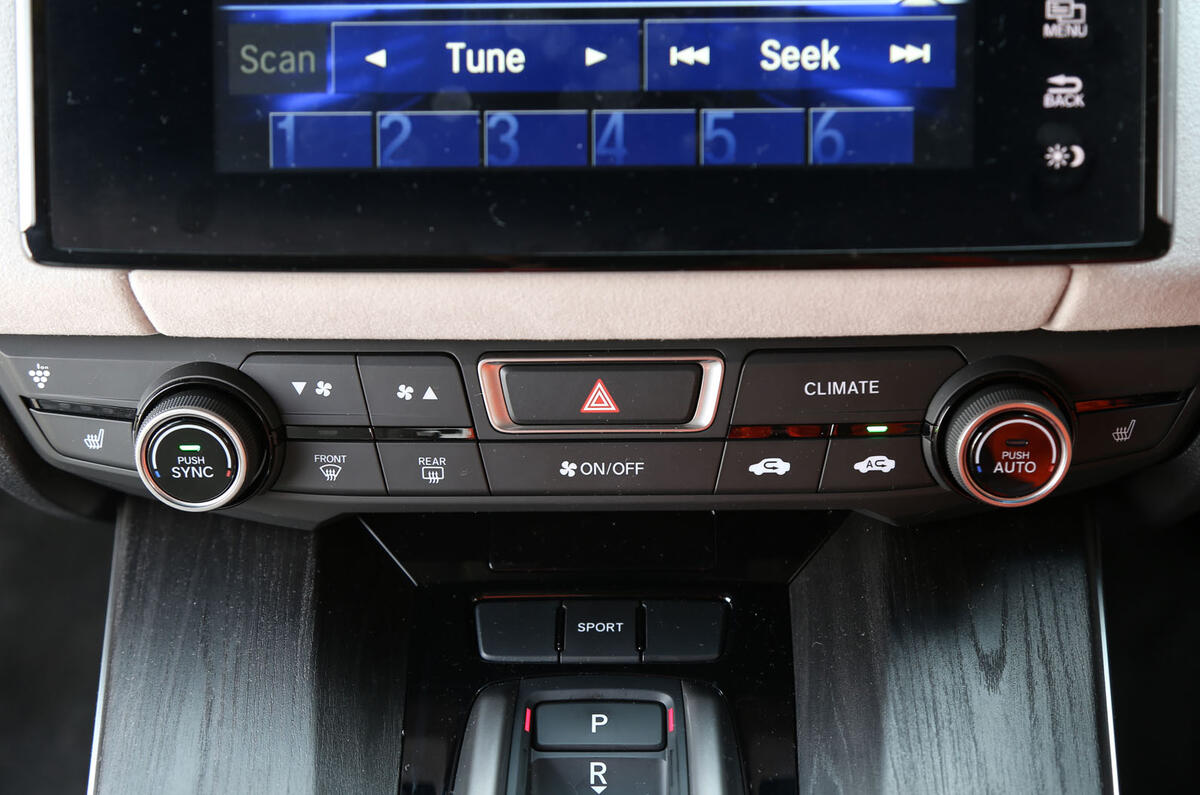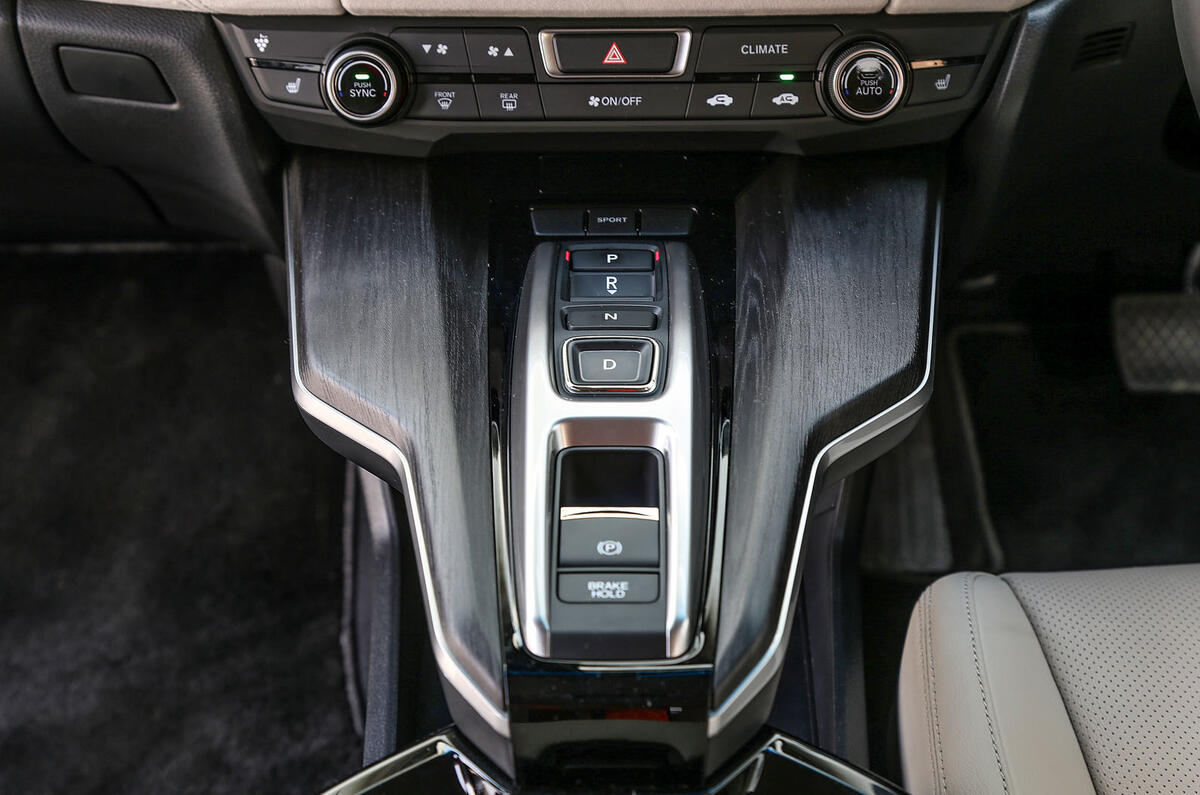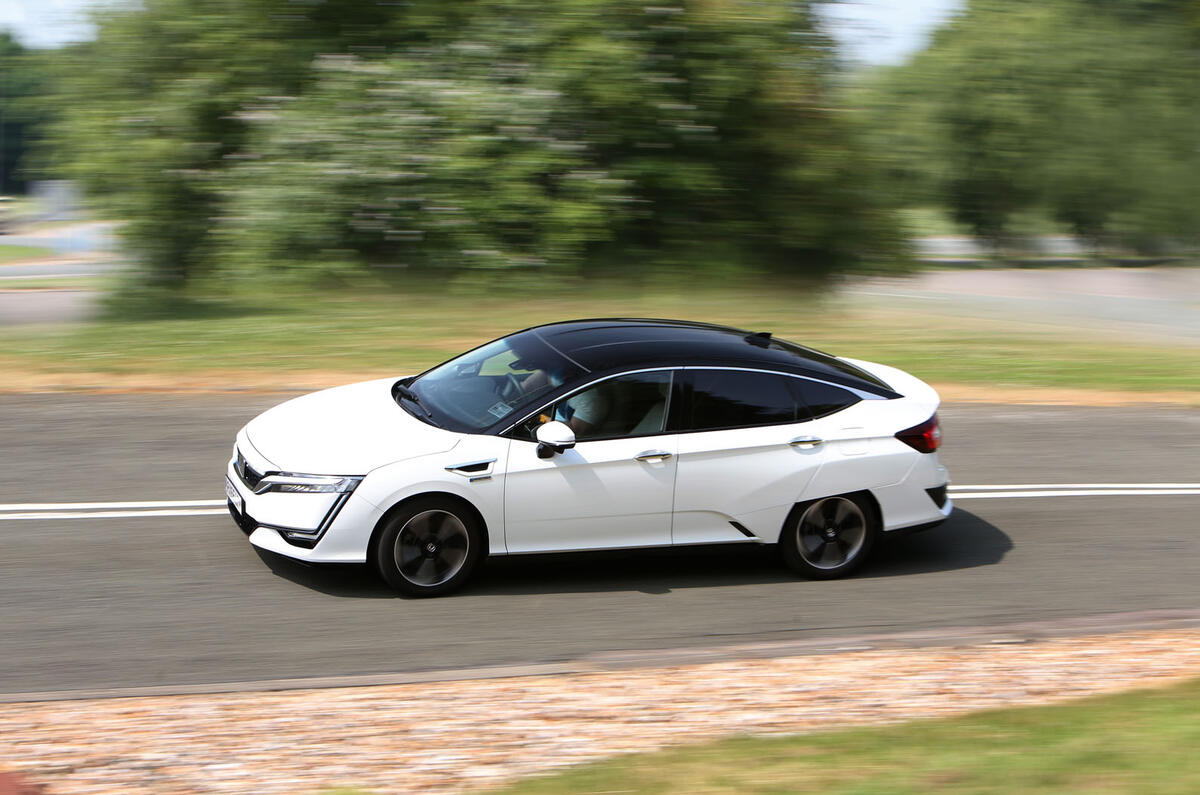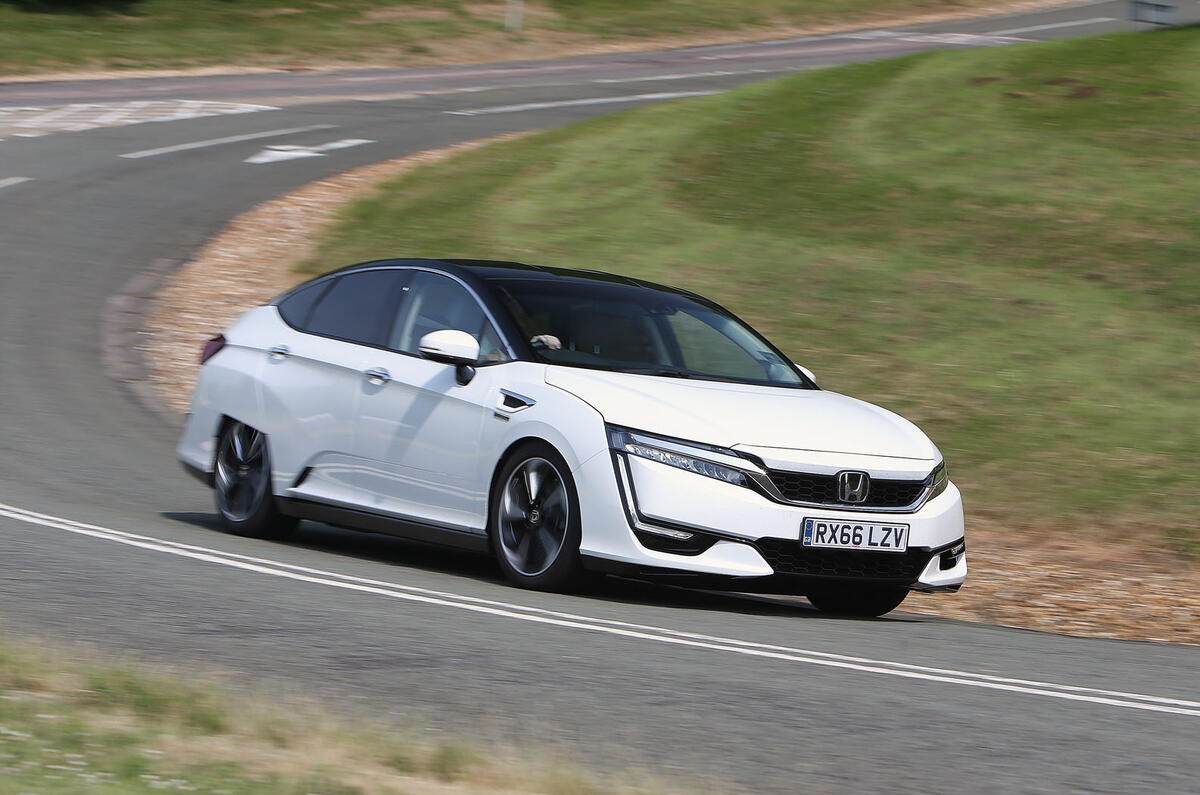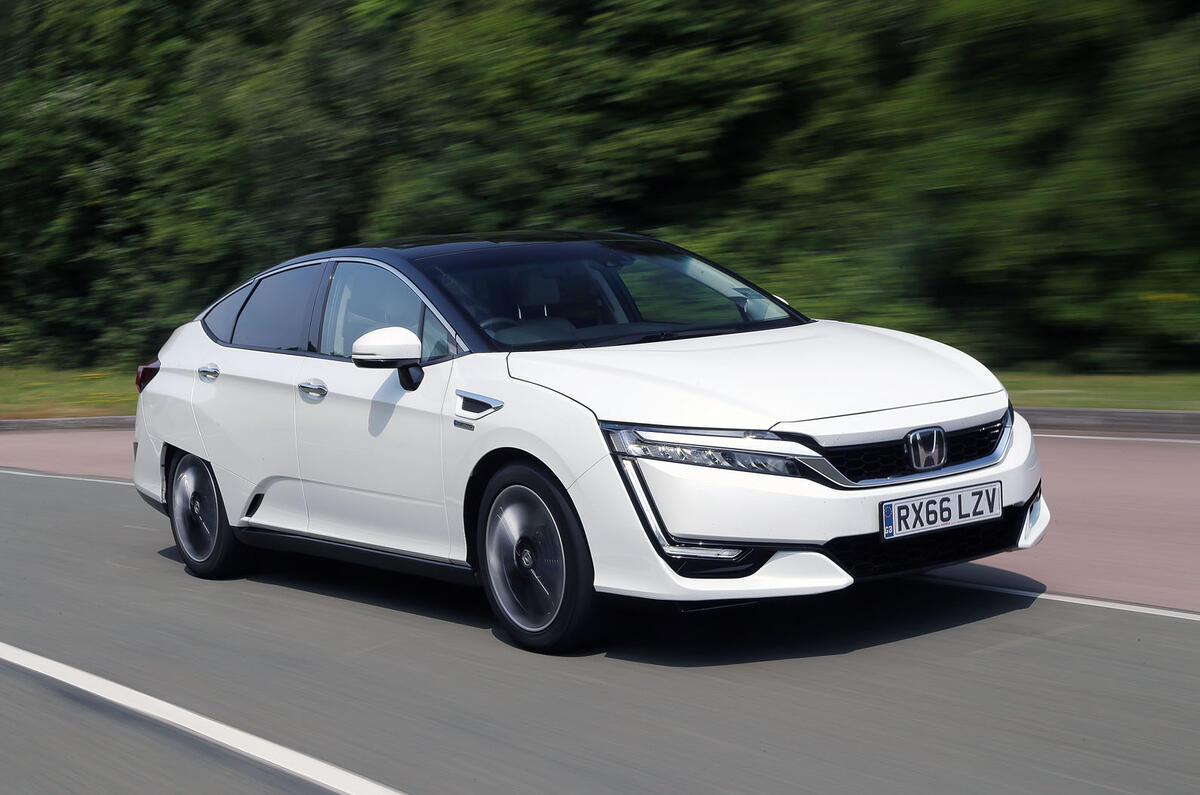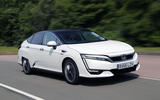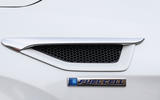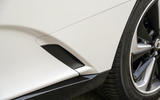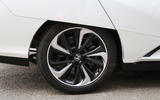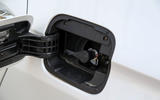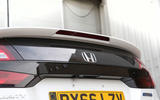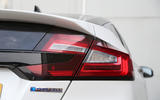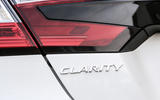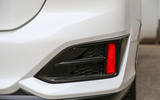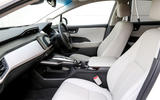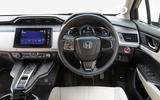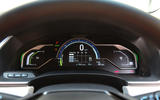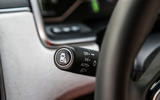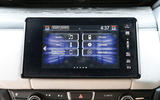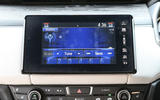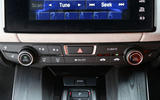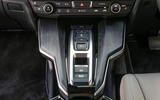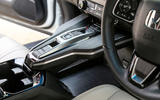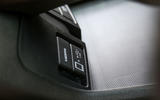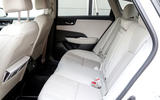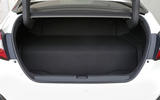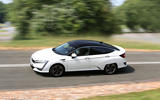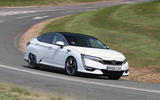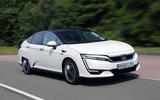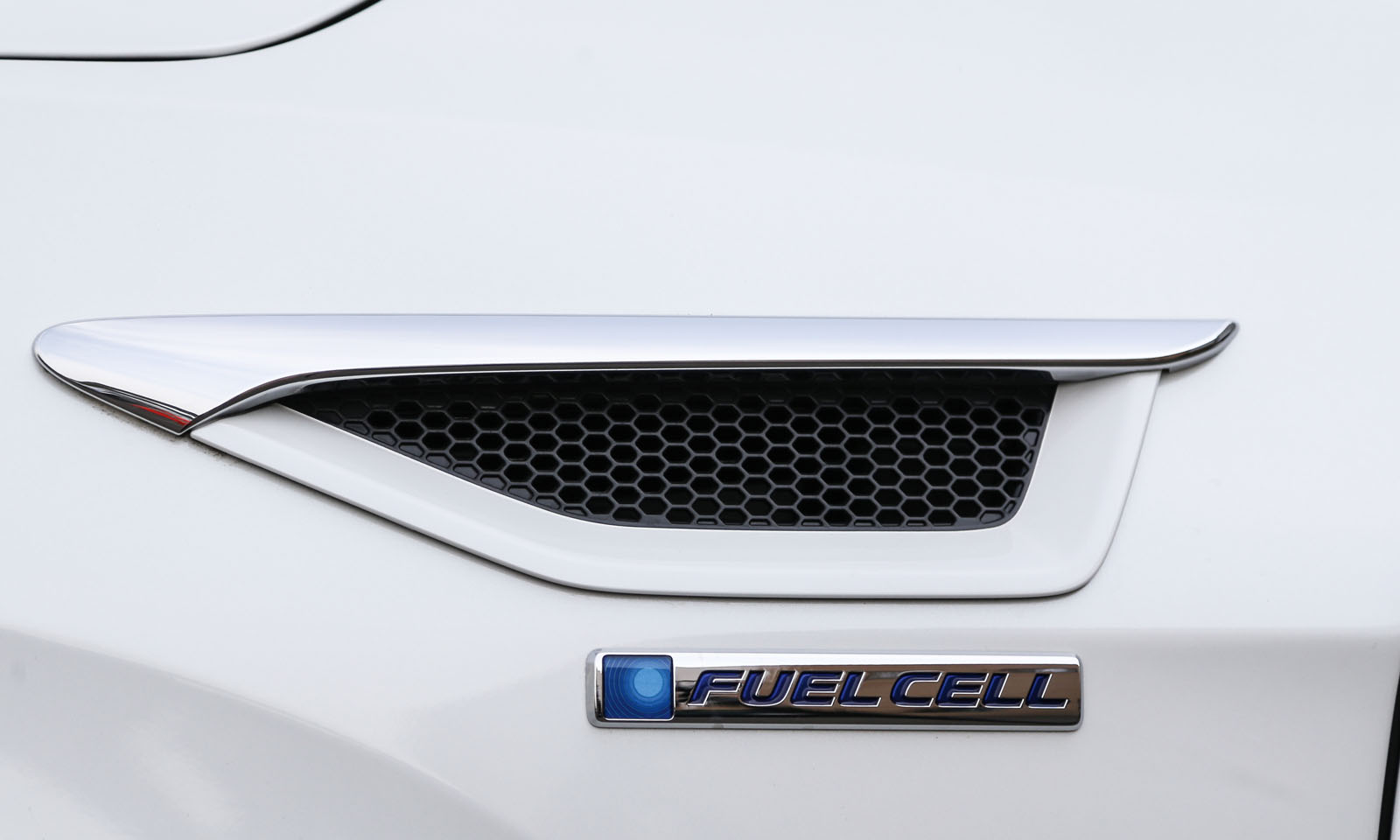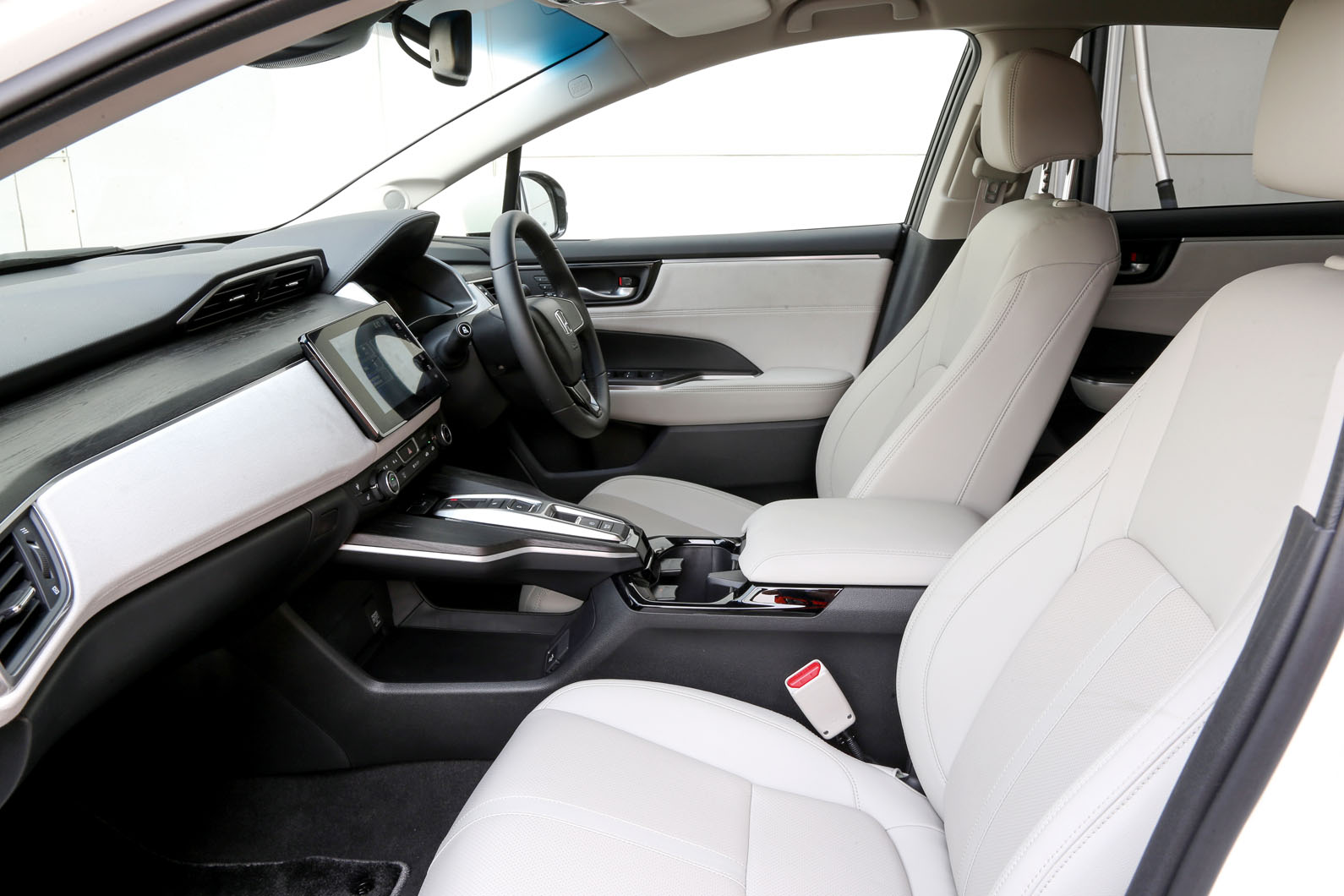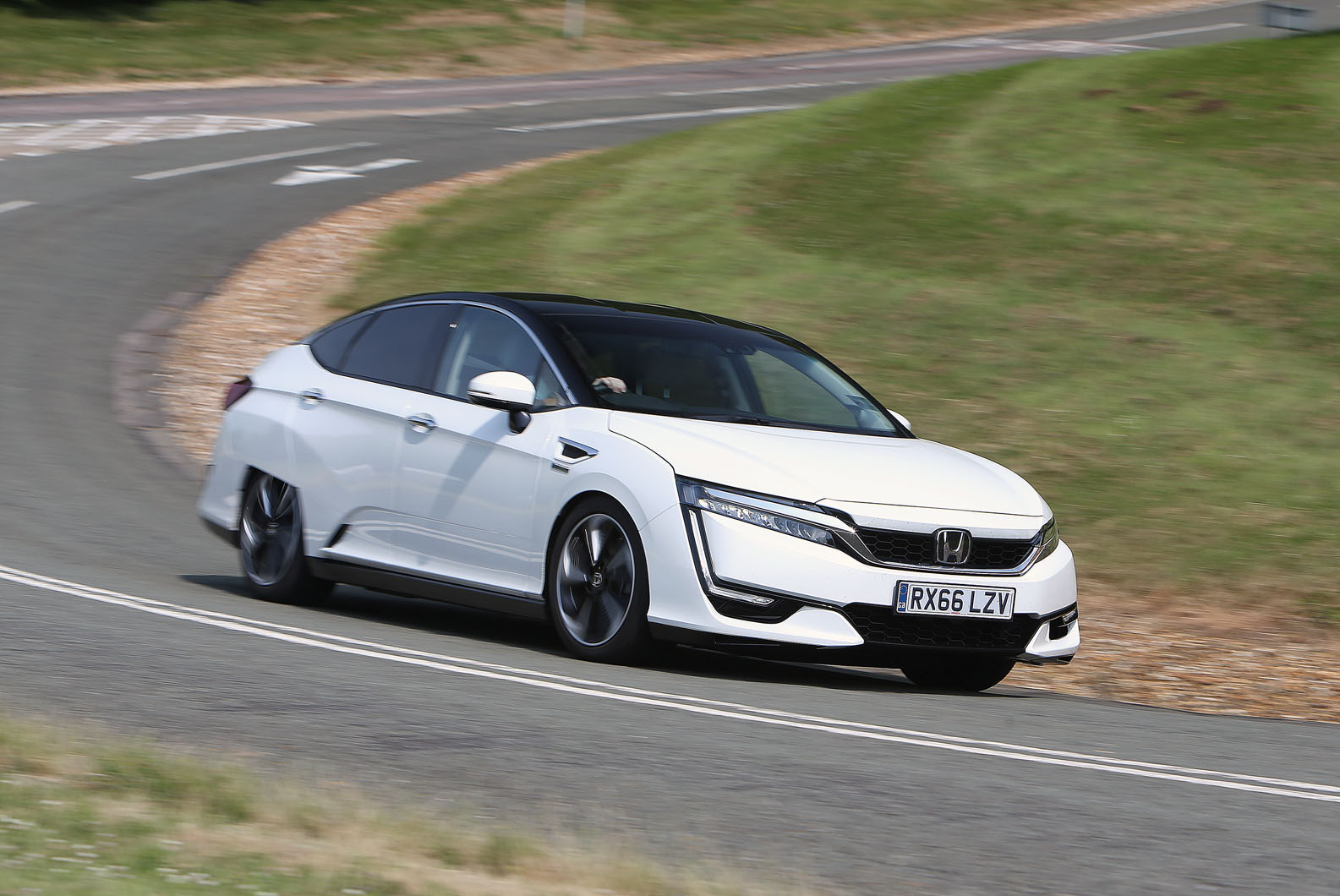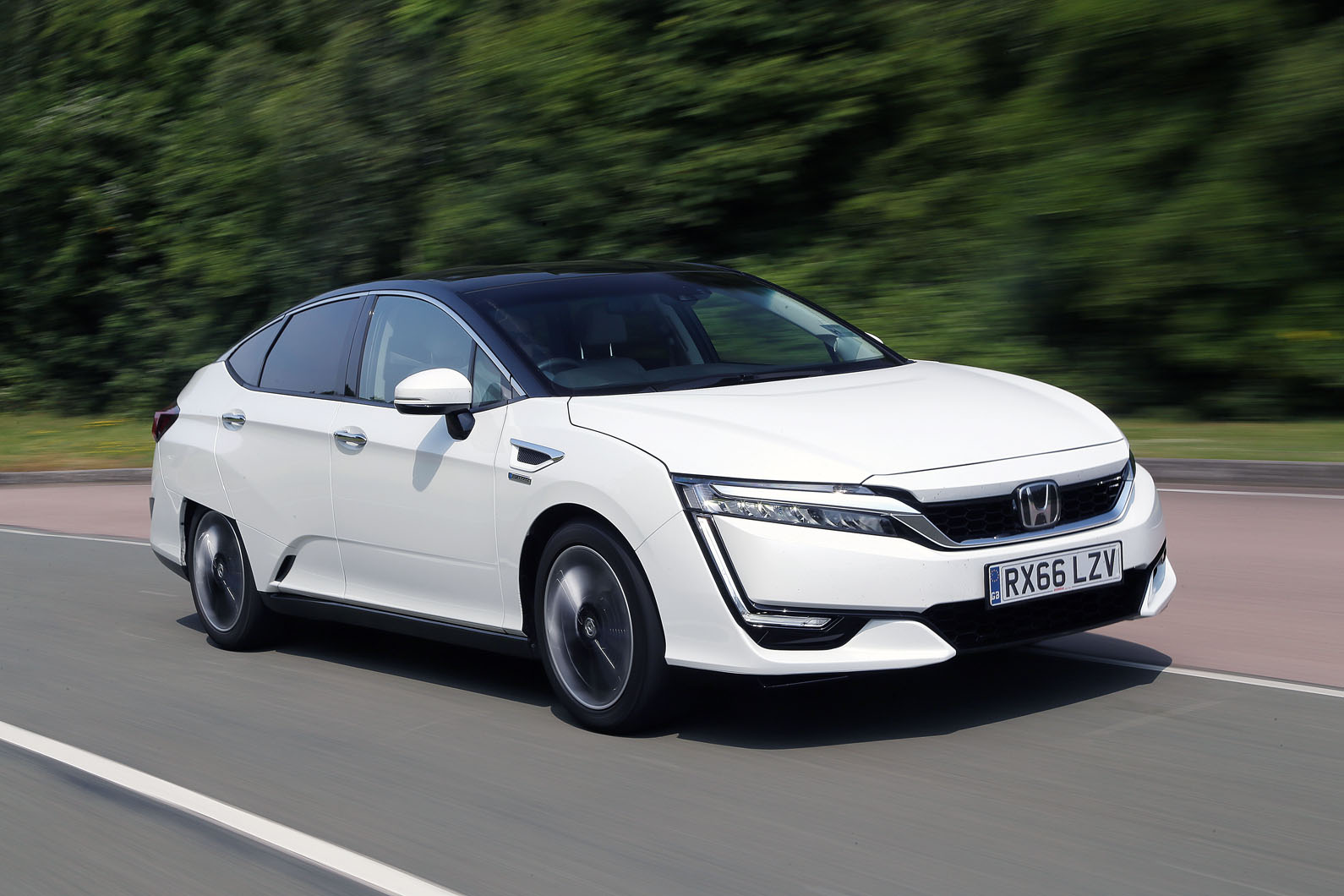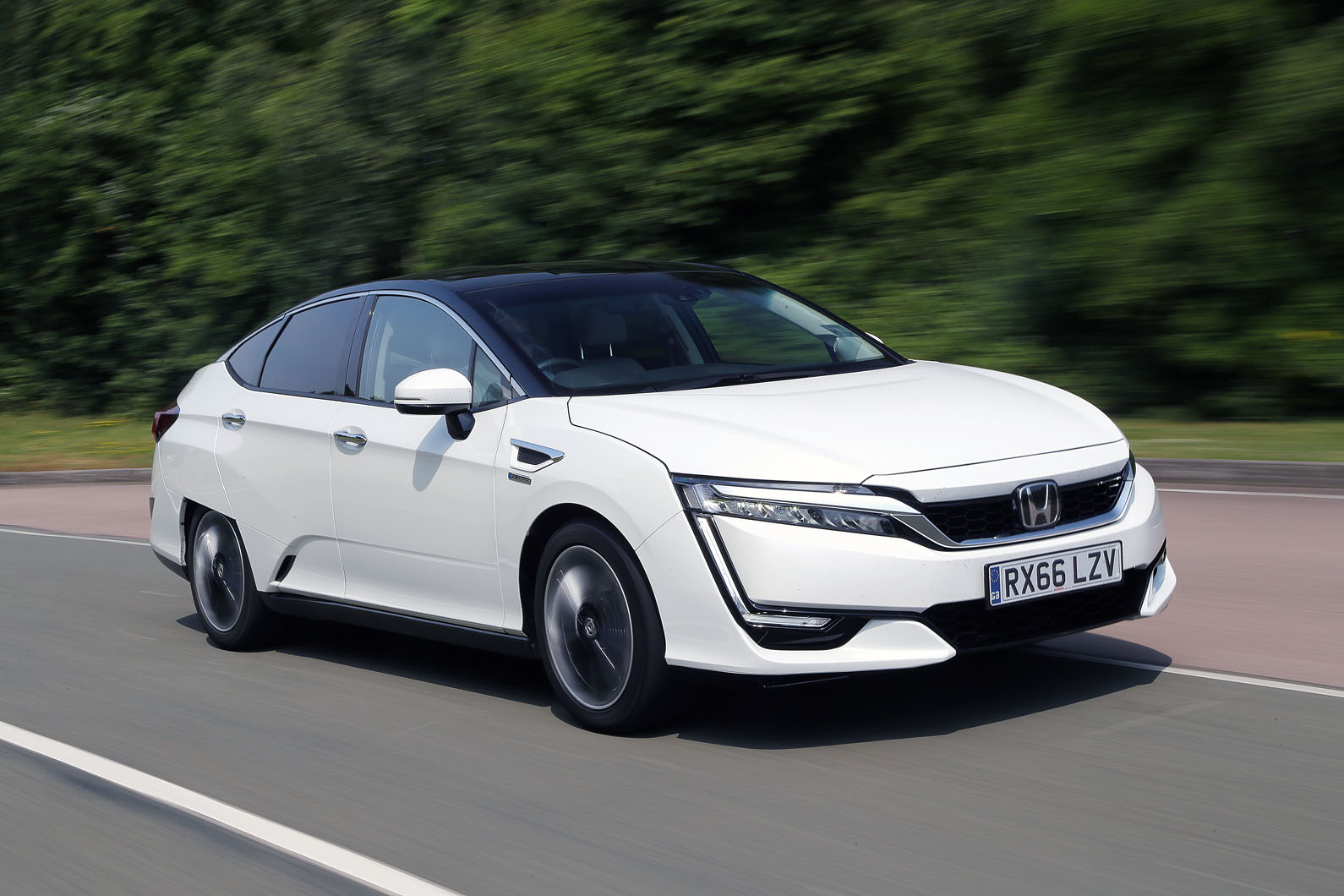The challenges of finding space for hydrogen storage, a fuel cell stack, an electric motor and plenty of high-voltage power electronics has often prevented the various hydrogen fuel cell prototypes the world has already seen from being practical cars, even though many were large enough to be expected to be practical.
The Clarity goes some way to correcting that. This is a big saloon with a big cabin that’ll house four larger adults in plenty of comfort, or three kids across the back seat at a push (whereas a Toyota Mirai is a strict four-seater).
Our tape measure put typical rear leg room (our standard benchmark of what’s left in row two when the driver’s seat is set for a metre of front leg room) at 810mm – more than you get in a BMW 5 Series or a Mercedes-Benz E-Class – and showed head room to be comparable with those cars’, too.
Boot space is more disappointing because the location of one of the hydrogen tanks means you get limited overall loading length and there’s also no seat-folding or through-loading facility. Overall space is 334 litres, and although the boot is full width and of a good depth, there isn’t room to load long items like pushchairs and suitcases longways.
If you were making an entirely typical, rational assessment of the car’s interior ambience, equipment level and material quality, you’d probably observe that a customer spending upwards of £40,000 on a saloon car has a right to expect better; but remember, this isn’t a car with a fully realised business case and nor is it the average big saloon.
Many of the car’s fixtures and fittings would certainly need a bit of a material uplift in order to cut it in the mid-sized executive class – although not all of them.
Honda is committed to the idea of environmental sustainability and has opted for an Ultrasuede trim for the dashboard and door cards. This material is made out of recycled polyester via a very energy-efficient manufacturing process and looks and feels very natural. For a Clarity owner, it would never do for a living thing to be harmed in the making of the car’s seat upholstery (synthetic leather, but pleasant enough) or its veneer (a patterned ‘rosewood’ film trim made to resemble real wood).
The veneer isn’t too convincing, but it is very much like the trim fitted by Tesla, perhaps not entirely coincidentally.
The Clarity’s glossy 8.0in touchscreen will be familiar to Honda buyers, and it transfers from other models with all its established strengths and weaknesses.
In the plus column, it’s very legible and mostly easy to use. Among the negatives, its responsiveness can be inconsistent and there isn’t a car tester alive who prefers a made-up haptic volume control to the physicality of an old-fashioned dial.
Somewhat unexpectedly, the model also features Honda’s 540W, 12-speaker Premium Audio system, although typically it’s the Fuel Cell Power Monitor at which you’ll have any spare attention directed.
The monitor displays the status of the car’s powertrain and the associated storage, with energy use being delineated as a glowing blue ball graphic that changes size according to usage.
The navigation also has the capacity to show real-time status information about the nearest hydrogen stations, although a Post-it note that reads ‘coming soon’ would suffice in most of the UK.


